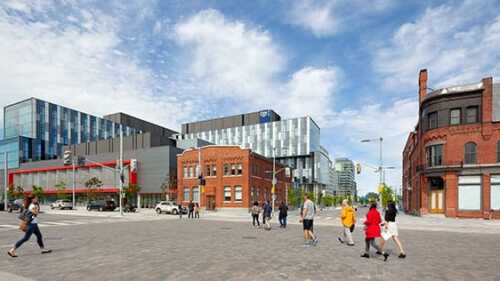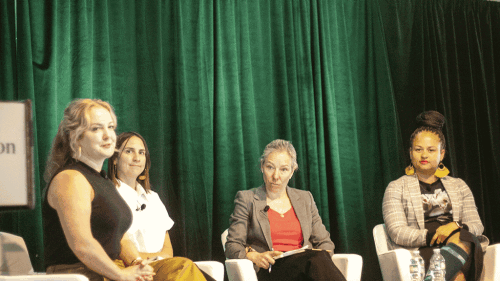Property Types
Hotels and Resorts
With the world economy struggling and Europe facing deteriorating political, financial, and social conditions, participants at the ULI Japan Summer Conference in Tokyo speculated about the potential of the island nation as an international financial center and destination.
Following the resort bust in 2008, many developers, investors, and lenders in the condo-hotel market were left with broken projects. However, they can minimize their losses by converting those properties into traditional hotels or by selling or renting them as multifamily units.
The Arizona Biltmore, often called the “Jewel of the Desert,” was awarded the ULI Heritage Award for architectural integrity, landscaping, and high quality of service in 1997. Through the hotel’s 83-year history, its owners have been able to maintain the Frank Lloyd Wright–influenced vision that made the resort famous.
Industrial
One of the top U.S. priorities is the need to address infrastructure challenges. Decades of underfunding and limited investment have rendered diverse systems of transportation, energy, water, logistics, and communication inadequate for sustaining economic growth and serving an expanding population. Read about new financing strategies required to attract infrastructure investment now and in the future.
Before the economy crashed, commercial property owners thought long and hard about retrofitting their properties for efficiency and environmental reasons. But today, survival has become building owners’ overriding goal, with deep-diving retrofits slipping down—or off—the list of priorities. Read more to learn when industry analysts expect once again to see a major spike in the retrofitting trend.
With a weak dollar boosting global demand for U.S. exports and the domestic economy inching back from the brink, the health of most U.S. industrial real estate markets is improving, too. Nonetheless, the national vacancy rate remains stubbornly in double-digit territory at 10.2 percent. Read what advice experts at Cushman & Wakefield and other firms have for savvy landlords with vacancies to fill.
Mixed-Use
Public/private partnerships build a mixed-use, urban-scaled community in Union City, California.
In 2003, Waterfront Toronto, a tri-government agency, undertook the transformation of 79 acres (32 ha) of provincially owned brownfields in Toronto’s downtown east end. The West Don Lands project was designed through extensive community engagement and collaboration between government and the private sector. The result was an award-winning precinct plan for a pedestrian-focused community—built around parks, with housing for people of all ages, income levels, and abilities; well served by transit, retail, and community amenities; and developed in accordance with stringent sustainability requirements.
The enormous mixed-use development on Los Angeles’s Westside is a tech and media hub. After decades of debate and false starts, Playa Vista is now home to more than 10,000 people.
Multifamily
The opportunities presented by artificial intelligence (AI) today seem unlimited. During the early innings of this exciting new technology, the phrases generative AI and machine learning are often being used interchangeably. In the multifamily industry, practical applications of AI are primarily based on machine learning, a subset of AI that uses algorithms to learn automatically from big data to identify patterns and make intelligent predictions.
Under the leadership of Chief Investment Officer Wes Fuller, Greystar, a vertically integrated real estate firm that owns, operates, and develops multifamily, student, and senior housing, began investing in international markets in 2013, including in Europe, Asia, and South America. The company’s robust institutional investment management platform now has a global presence in 249 markets.
Developers of middle-income projects can’t use subsidy programs such as federal low-income housing tax credits (LIHTCs) to finance their plans. Middle-income developments also often don’t earn enough in rent to support conventional construction loans or attract equity investors.
Office
Hollywood and the film industry has changed dramatically over the last several decades, especially in recent years with the rise of streaming networks.
Although residential fell more in the first quarter of 2023, office remains Europe’s most scarred commercial real estate sector, according to advisory firm Green Street. Government mandates around sustainability are also tightening, and Cushman & Wakefield says 76 percent of European office space could be obsolete by 2030 unless landlords start investing now.
While some big-box retail stores are closing, some developers are eyeing opportunities with retail-to-life science conversions or additions.
Residental
According to a forecast by Marcus & Millichap, Minneapolis/St. Paul climbed two spots to head this year’s National Multifamily Index, as sustained apartment demand kept vacancy persistently tight, allowing for steady rent growth. San Diego also inched up two notches on solid rent growth to claim second place.
A San Francisco developer imports Chinese steel modules to install 22 units of graduate student housing in only four days.
A shortage of affordable housing is only one component of a broader community development crisis.
Retail
For decades, civic leaders have tried to revitalize Market Street, San Francisco’s central thoroughfare, only to see their efforts founder. “I sometimes call it the great white whale of San Francisco,” says Eric Tao, managing partner at L37 Development in San Francisco and co-chair of ULI San Francisco. “Every new mayor, every new planning director, every new economic development director has chased that white whale.” This year, however, an international competition of ideas hosted and run by ULI San Francisco, with support from the ULI Foundation, generated fresh momentum for reimagining the boulevard. The competition drew 173 submissions from nine countries and sparked new conversations about the future of downtown San Francisco.
The OAK project began in 2009, when a development firm set their sights on the corner of Northwest Expressway and North Pennsylvania Avenue, the state’s most important and busiest retail intersection. As the region’s only parcel capable of supporting a vertically integrated project of this scale and density, that land represented an opportunity to create something truly special.
As aging retail continue to evolve, one increasingly popular trend has been to redesign malls as town centers—recalling a time when such commercial districts were the heart and soul of a community. Mall–to–town center retrofits are emerging throughout the nation, especially in suburban communities, where pedestrian-friendly, mixed-use environments are highly attractive to millennials now raising families.

















